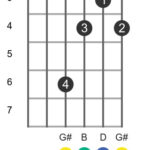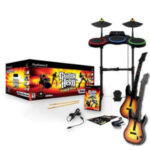Starting your guitar journey can be both exciting and challenging. Many beginners grapple with fundamental techniques, often feeling their progress is slow. It’s common to encounter issues with hand positioning and finger dexterity, especially since playing guitar uses hand muscles in ways unlike everyday activities. But with the right approach and consistent practice, significant improvement is absolutely achievable. This guide will walk you through key techniques focusing on hand posture and effective practice methods to help you get better at guitar.
Understanding Proper Hand Position for Guitar Playing
Many initial struggles on the guitar stem from incorrect hand posture, particularly thumb placement. Think of your brain as a personal trainer guiding your fingers. Just as a trainer helps you build strength and coordination in the gym, your brain needs to train your hand muscles for the precise movements required for guitar playing. Developing the necessary strength and dexterity takes time and focused effort. Conditioning your hands for guitar is akin to training for a specific sport; it requires targeted exercises to build the right muscle memory and coordination. If you’re facing challenges with your hand position, chances are it traces back to the way you’re holding your thumb.
Optimizing Your Palm Technique
Maintaining a flat palm is crucial for proper guitar technique, especially when practicing exercises like the “Caterpillar Exercise.” Beginners often mistakenly angle their palm, but a flat palm is essential for achieving a rounded pinky finger. Imagine holding a heavy bag at arm’s length. It’s much easier to curl your arm and bring the weight closer to your body. Guitar strings have tension, similar to lifting weights for your fingers. A rounded pinky, facilitated by a flat palm, brings the fingertip closer to the knuckle, making it significantly easier to apply pressure to the strings and enhance dexterity. This improved leverage translates to cleaner notes and less hand fatigue.
Furthermore, consciously bring your knuckles at the base of your fingers slightly forward, ideally in line with or just ahead of the fretboard. This positioning optimizes the use of your fingertips and expands your reach across the fretboard. As you move across the strings, from the low E to the high E, aim for a straight line from the second knuckles of your fingers to your elbow. This alignment helps prevent strain and potential nerve constriction in your wrist, minimizing the risk of repetitive strain injuries. While wrist pain is unlikely for beginners focusing on correct posture, consulting a physiotherapist is advisable if you experience persistent discomfort. Remember, some muscle fatigue is normal when starting new hand exercises – it indicates your muscles are working and adapting, much like the soreness after a good workout at the gym.
Mastering Effective Guitar Practice
Effective practice is not just about repetition; it’s about focused attention and efficient use of your mental bandwidth. Mental bandwidth refers to the limited amount of attention we can allocate during practice. If you concentrate too intensely on one aspect, you might overlook others. As the number of things you try to focus on increases, the attention available for each decreases. Similarly, attempting to play faster reduces overall focus. Therefore, mindful practice is key to getting better at guitar.
Start by isolating specific techniques or passages you want to improve. Break down complex pieces into smaller, manageable sections. Focus on accuracy and clean execution at a slower tempo before gradually increasing speed. This methodical approach ensures you are building solid muscle memory and reinforcing correct techniques. Consistency is also paramount. Regular, shorter practice sessions are often more effective than infrequent, lengthy ones. Aim for daily practice, even if it’s just for 15-30 minutes. Consistent practice builds muscle memory and reinforces learned skills, leading to steady and noticeable improvement over time. By practicing mindfully and consistently, you’ll maximize your progress and truly get better at guitar.


